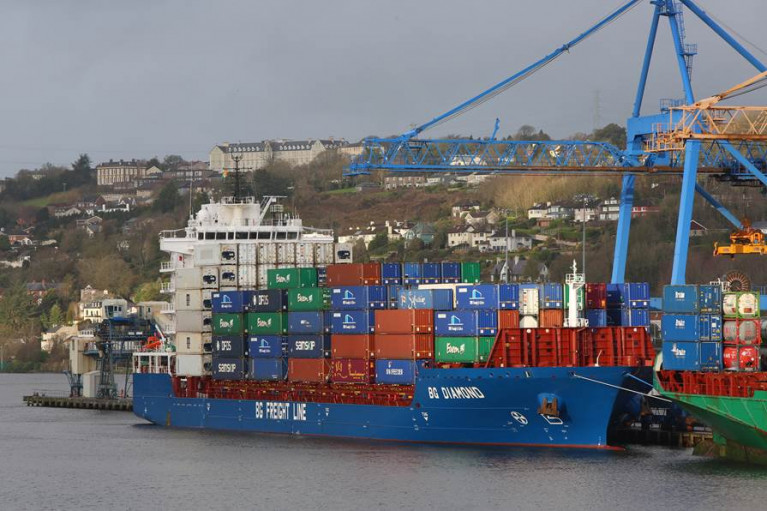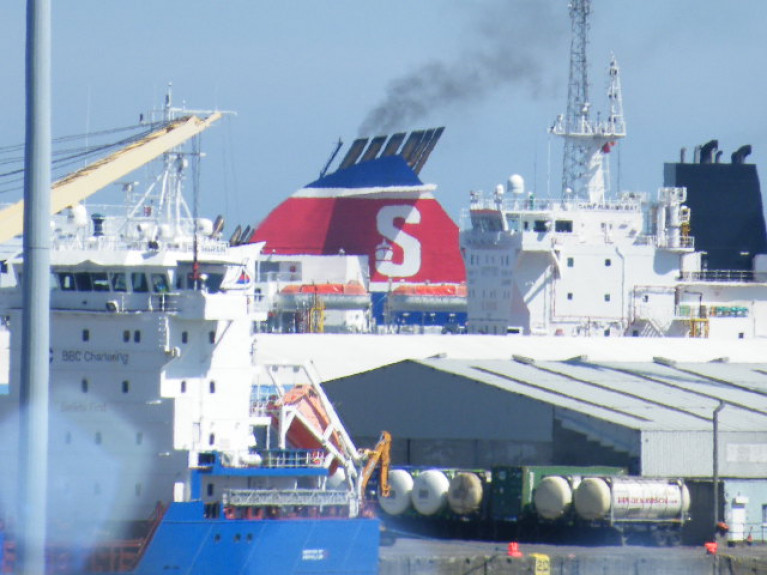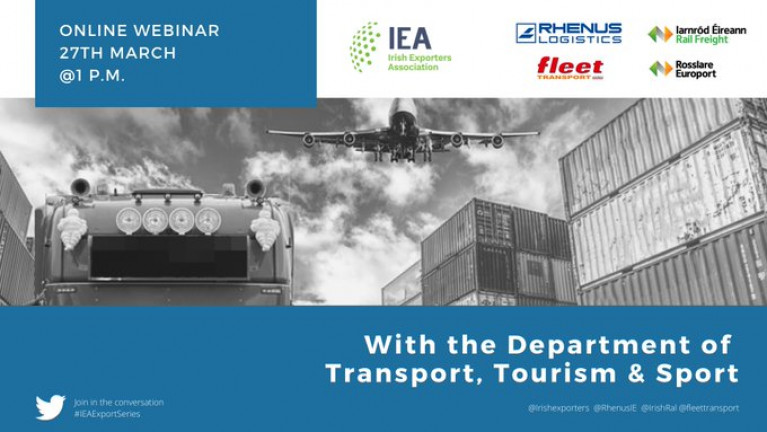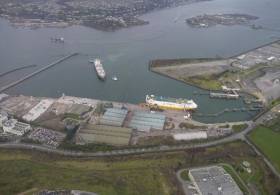Displaying items by tag: Irish Exporters
Shipping in the Red Sea Sees Irish Exporters Advised to Engage with Freight Carriers
Disruption to shipping in the Red Sea has led to Irish export businesses being advised to engage with their freight carriers and look at their supply chains as the situation in the Middle East region continues.
Due to attacks by Houthi militants, there is growing concerns on its impact on commercial shipping which could affect supply chains for months ahead.
The level of shipping activity comes close to 20% of global trade that transits through the Bab al-Mandab Strait, at its narrowest point is just 18 nautical miles at the southern end of the Red Sea.
The instability in the region is leading to elevated spot freight rates and delays to container lead times.
On the western periphery of Europe, Ireland's location means it is at the end of the supply chain and therefore there is a limited availability of containers which in effect will have an acute impact here.
Commenting on the Red Sea situation, Irish Exporters Association CEO, Simon McKeever, said, "We're beginning to hear from our members that looking out to February and March that spot rates are beginning to be affected."
More RTE News reports on the impact to business.
Free Trade Deals: Are they Really Working for Irish Exporters?
Due to the rapid spread of the Delta variant has forced some countries to reverse plans to reopen their economies, denting the hopes of Irish exporters for continued expansion.
In particular, falling exports to countries outside of Europe are beginning to spook Ireland's exporters, who managed last year to throw off the impact of the many burdens of the covid pandemic and grow sales both within the EU but also across global markets.
Not so this year, according to the latest Eurostat release which shows all EU member states registering large increases in exports outside Europe with the exception of Ireland and Cyprus.
Double-digit export growth to Asia and the Americas was recorded by Germany, France, Italy and Spain, while Ireland fell back by four per cent year on year for the first five months of 2021. Much of the €2.4bn in lost sales emanated from falling exports to Japan, Canada and the US.
The fall in sales to Japan is particularly worrying as it was Ireland’s third-largest trade partner outside the EU and the second largest in Asia back in February 2019, when the EU-Japan free trade deal was signed off.
Since then, exports to the market have fallen each year and looks likely to fall by a further third this year.
The free trade agreement was supposed to be good news for Irish exporters of pharmaceuticals, medical devices and agri-foods.
Further reading from this Irish Examiner story here.
Majority of Irish Exporters See New Opportunities in UK Market
Almost 90% of Irish exporters can see new opportunities in the UK market, according to research carried out by Enterprise Ireland.
While the new EU UK trade and cooperation agreement has resulted in changes to how businesses operate in the UK, the market remains Ireland's single largest trading partner.
Out of the 427 Irish exporters surveyed, 83% say their plan is to grow exports to the UK, while 15% say they will sustain exports to the UK.
The survey was conducted ahead of the launch of Enterprise Ireland’s 'Evolve UK' initiative, a programme designed to deliver insights to Irish companies on the evolving UK market through reports, insight bulletins and virtual events.
More here RTE reports on our trading relationships.
Irish Exporters Assoc & Dept. of Transport to Host Webiner to Discuss COVID (Join In Online)
The Irish Exporters Association (IEA) announced yesterday in conjunction with the Department of Transport that tomorrow (Friday, 27 March at 1300) they are to hold a webiner to discuss the latest COVID-19 situation.
A Q&A session will be part of the 1-hour long lunchtime webiner where you can join in the discussion online, noting webiner requires registration by online by clicking this LINK
Speakers at the webiner will be:
Eddie Burke, Principal Officer, EU and Central Policy Division, Dept. of Transport the Department of Transport, Tourism & Sport (DTTAS).
This is to be followed by a Q&A session with:
• Eddie Burke, Principal Officer, EU and Central Policy Division
• Mary Dunning, Principal Officer, Maritime Transport Division,
• Claire Martinez, Principal Officer, Road Transport and Maritime Freight Division
Afloat adds the DTTAS releases Marine Notices for 2020, to consult all online click HERE.
Among them as Afloat reported yesterday, some recent notable notices (repeated below) for the Ports & Shipping sectors
Marine Notice No. 14 of 2020
Temporary Contingency Planning for Certification of Seafarers –COVID-19 (click to download)
In addition Marine Notice No. 15 of 2020
Temporary Contingency Planning for the Surveying and Certification of Irish Registered Ships –COVID-19 (click to download)
Also available from DTTAS is Important Health Information on symptoms, public health advice, social distancing and how to prevent the spread of COVID-19 (Coronavirus) - click HERE
Committee to Discuss Brexit with British Irish Chamber of Commerce & Irish Exporters Association
#Ports&Shipping - In Dublin, the Joint Committee on Agriculture, Food and the Marine will meet today (Tuesday, 13th Nov.) to discuss the impact of Brexit on agriculture, food and fisheries.
Representatives from the British Irish Chamber of Commerce and the Irish Exporters Association will appear before the Committee.
“Brexit represents a clear threat to the Irish agri-food sector and Ireland must stand ready to mitigate the negative impact on Irish agriculture and fisheries”, said Committee Chair, Pat Deering TD.
“The possibility of a no-deal Brexit is of great concern to Irish business and both the British Irish Chamber of Commerce and the Irish Exporters Association are working to ensure that the Irish Agri-food sector is as prepared as possible for whatever Brexit brings”, Deputy Deering said.
“Tomorrow the Committee will engage directly with these two bodies to discuss what needs to be done to protect Irish Agri-food; maintain markets in the UK and to develop new markets worldwide in order to reduce our dependence on the UK.”
The meeting will start this afternoon (3.30pm) in Committee Room 1, Leinster House from where proceedings can be viewed live here
Exporters Figures Hit As Business Flays UK’s Brexit Plan
#ExportsBrexit - Firms which employ large numbers of people by Irish owned companies are being hit by the slump in sterling, the latest trade figures suggest.
Business groups here writes The Irish Examiner condemned UK prime minister Theresa May’s speech on the UK’s plans for Brexit as being universally bad for Ireland.
Even as she confirmed that her government intended to pursue a hard line in negotiations with Brussels in the looming talks, sterling yesterday rose against the dollar and the euro as investors were placated by her comments that the UK parliament would have some sort of role in reviewing the Brexit proposals.
Sterling rose to 86.5p against the euro but remains 13% below its level of June 23 when the UK voted to quit the EU in its referendum.
Sterling’s plunge in value has piled the pressure on Irish SMEs exporting into Britain because they are in no position to cut margins to compensate for the huge currency swing.
The CSO trade figures showed that medical and pharmaceutical products — which are more likely to be made by multinationals — helped boost seasonally- adjusted exports to almost €10.2bn in November, up from €9.5bn a year earlier.
However, exporters that rely on the UK saw a slowdown as machinery and transport, manufactured goods, and foods “ all trended weaker over the course of 2016”, because of their exposure to the fall in sterling against the euro, said Davy Stockbrokers economist David McNamara.
For more including about the Customs Union, click here.
































































